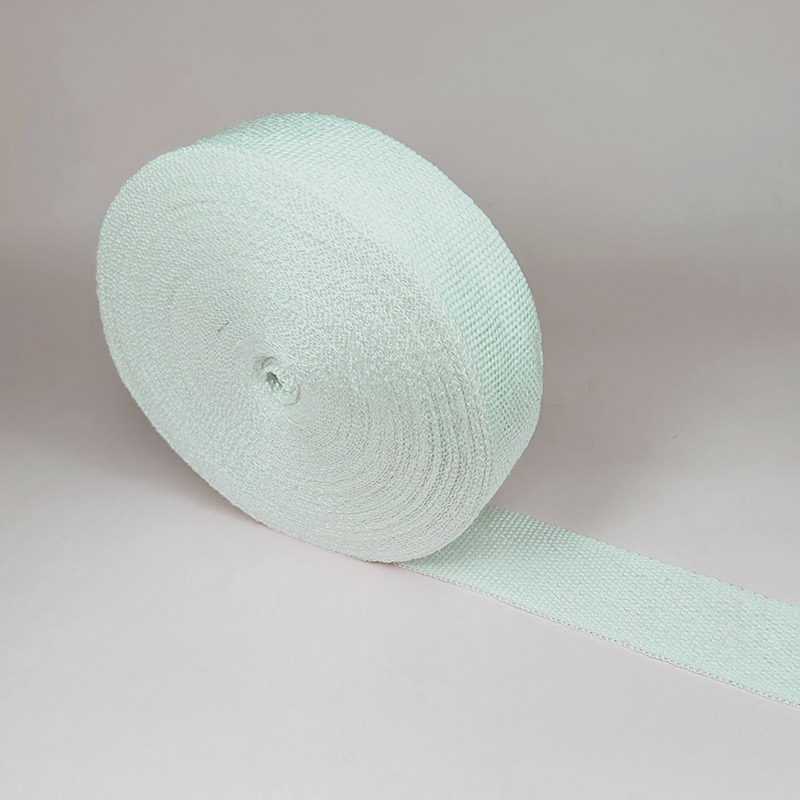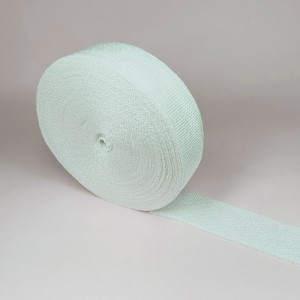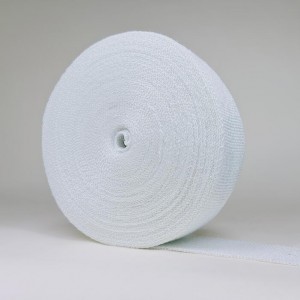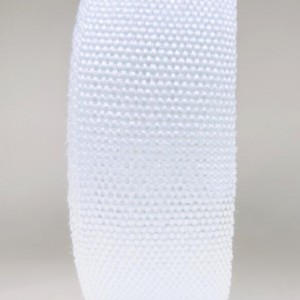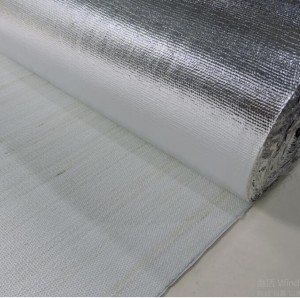FG-Catalog Fiberglass Strong and Light weight Fiberglass Product
Product application: Glass fiber tape is mainly used in industry: heat insulation, fireproof, inflaming retarding, seal, etc. Especially, it is applied to the sealing and protection of all kinds of household fireplaces .
Technical Overview:
Working Temperature:
550℃
Size Range:
Width: 15-300 mm
Thickness: 1.5-5mm
Standard length: 30M
More knowledge about fibreglass
FIBERGLASS YARN
The process of transforming melted glass into fibers through heating and drawing glass into fine fibers has been known for millennia; however, only afer the industrial development during the 1930s have made possible a mass producton of these products suitable for the textile applicatons.
The fibers are obtained through a five step process known as batching, melting, fiberizaton, coating and drying/packaging.
•Batching
During this step, the raw materials are carefully weighed in exact quantities and thoroughly mixed or batched. For example, E-Glass, is composed by SiO2 (Silica), Al2O3(aluminium oxide), CaO (Calcium oxide or lime), MgO (magnesium oxide), B2O3 (boron oxide), etc…
•Melting
Once the material is batched is then sent to special furnaces with a temperature of about 1400°C . Normally furnaces are divided into three sectons with different temperature range.
• Fiberizaton
The molten glass passes through bushing made of an erosion- resistant platnum alloy with a determined number of very fine orifices. Water jets cool the filaments as they come out from the bushing and are successively collected together by high speed winders. Since tension is here applied the stream of molten glass is drawn into thin filaments.
•Coating
A chemical coating is applied on the filaments to act as a lubricant. This step is necessary to protect the filaments from abrading and breaking as they are collected and wound into forming packages.
•Drying/packaging
The drawn filaments are collected together into a bundle, forming a glass strand composed of various number of filaments. The strand is wound onto a drum into a forming package that resembles a spool of thread.

YARN NOMENCLATURE
Glass fibers are normally identfied either by US customary system (inch-pound system) or by the SI/metric system (TEX/metric system). Both are internatonally recognized measuring standards which identfies the glass compositon, filament type, strand count and yarn constructon.
Below are the specific identficaton system for both standards:

YARN NOMENCLATURE (contnued)
Examples of yarn identficaton system

Twist directon
The twist is applied mechanically to yarns to provide benefits in terms of improved abrasion resistance, beter processing, and higher tensile strength. The directon of the twist is normally indicated either with the leter S or Z.
The S or Z directon of the yarn can be recognized by the slope of the yarn when it is held in a vertcal positon
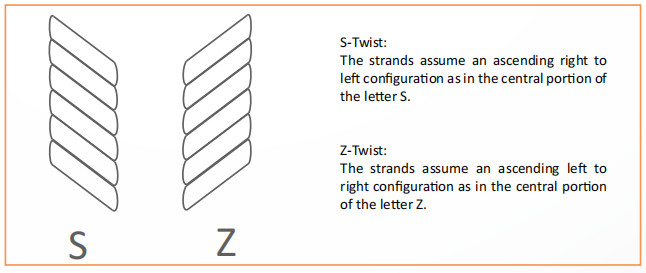
YARN NOMENCLATURE (contnued)
Yarn diameters -Comparison values between US and SI system
| US Units(leter) | SI Units(microns) | SI UnitsTEX (g/100m) | ApproxiateNum of filaments |
| BC | 4 | 1.7 | 51 |
| BC | 4 | 2.2 | 66 |
| BC | 4 | 3.3 | 102 |
| D | 5 | 2.75 | 51 |
| C | 4.5 | 4.1 | 102 |
| D | 5 | 5.5 | 102 |
| D | 5 | 11 | 204 |
| E | 7 | 22 | 204 |
| BC | 4 | 33 | 1064 |
| DE | 6 | 33 | 408 |
| G | 9 | 33 | 204 |
| E | 7 | 45 | 408 |
| H | 11 | 45 | 204 |
| DE | 6 | 50 | 612 |
| DE | 6 | 66 | 816 |
| G | 9 | 66 | 408 |
| K | 13 | 66 | 204 |
| H | 11 | 90 | 408 |
| DE | 6 | 99 | 1224 |
| DE | 6 | 134 | 1632 |
| G | 9 | 134 | 816 |
| K | 13 | 134 | 408 |
| H | 11 | 198 | 816 |
| G | 9 | 257 | 1632 |
| K | 13 | 275 | 816 |
| H | 11 | 275 | 1224 |
Comparison values - Strand Twist
| TPI | TPM | TPI | TPM |
| 0.5 | 20 | 3.0 | 120 |
| 0.7 | 28 | 3.5 | 140 |
| 1.0 | 40 | 3.8 | 152 |
| 1.3 | 52 | 4.0 | 162 |
| 2.0 | 80 | 5.0 | 200 |
| 2.8 | 112 | 7.0 | 280 |
YARNS
E-Glass Continuous twisted yarn

Packaging
E-Glass Continuous twisted yarn


